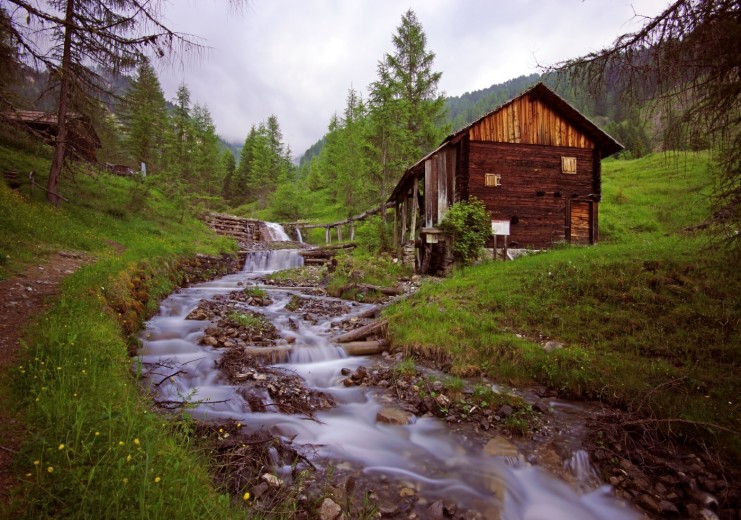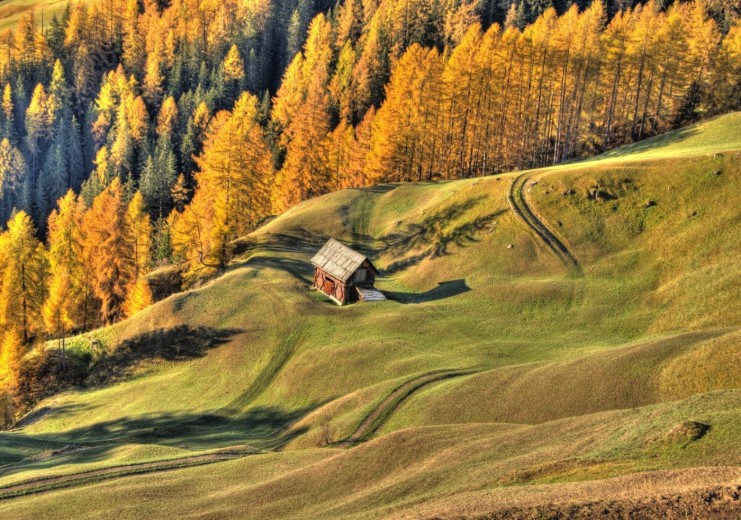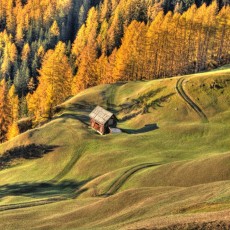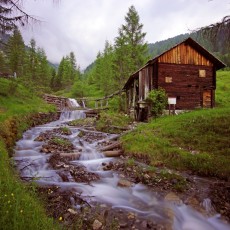Viles – Centuries-old settlement culture
The famed “Viles,” the groups of hamlets which were built on the sunny sides of the slopes are among the oldest settlements in this area. A good number of the names of these farms date back to the 13th and 14th centuries; they are among the most valuable cultural heritages of the Campill Valley, and a popular destination for day trips today: Lagoscel, Ví, Grones, Seres and Miscí.
The Viles were built in clearing “islands,” where the woodland had been razed to make room for grain crops and agriculture up to 1,600 metres a.s.l. The typical farmhouse consists of a lower floor built in stone and an upper, cantilevered floor in wood, which gives the building their distinctive mushroom-like appearance. The farm buildings are usually joined directly to the homes and at least three farms are linked, not just in proximity and shared facilities such as passageways and courtyards, but also through an economic connection in the form of a shared oven and well, and shared rights of use. The settlement memorials bear witness to a sense of belonging and parsimonious use of the land, which was the sole basis of life. One particularly characteristic touch in the small hamlets can be seen in the seven to eight metre high drying racks known as “Favas” or “Harpfen” which were used to dry grain and fodder beans.









